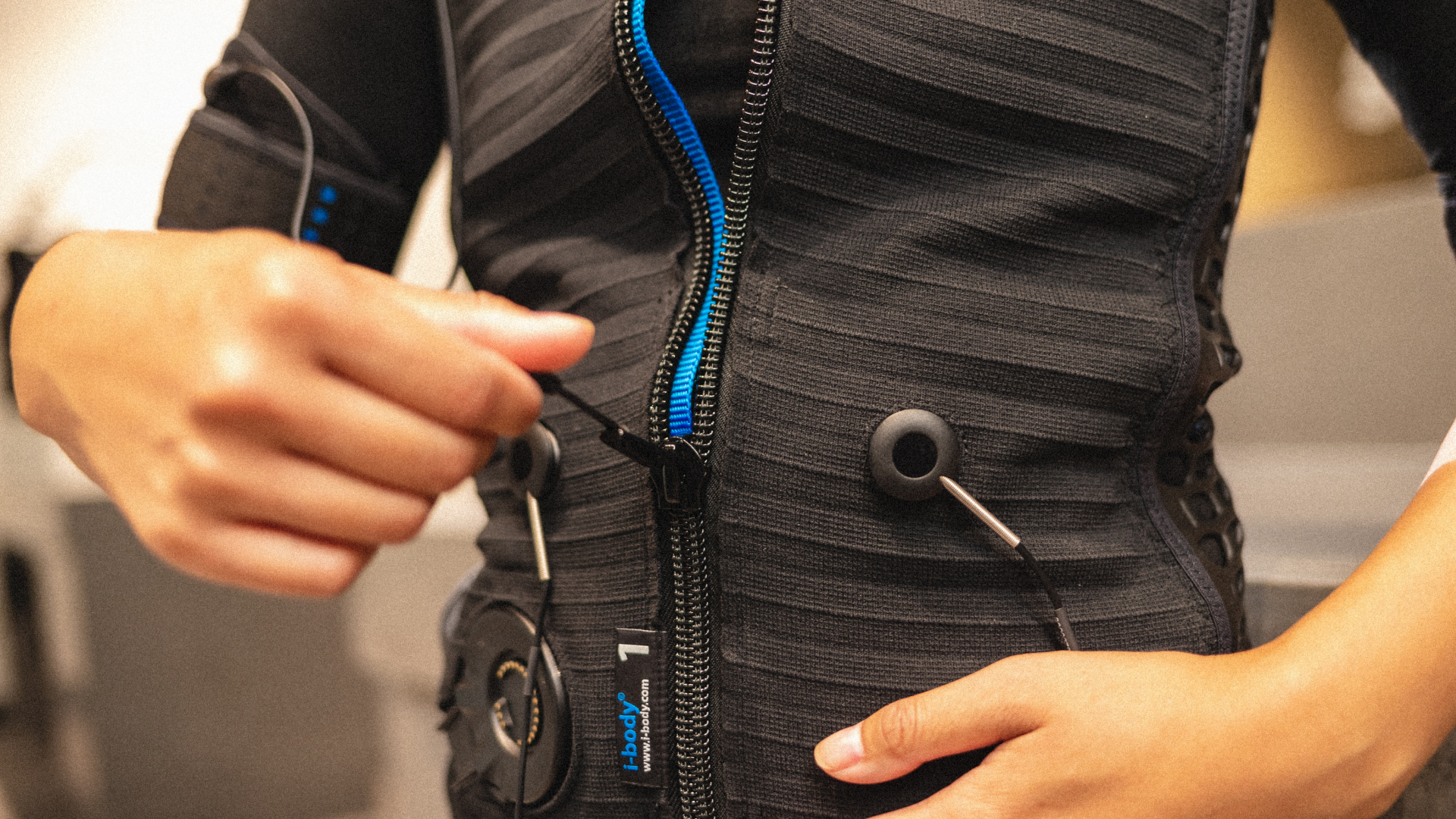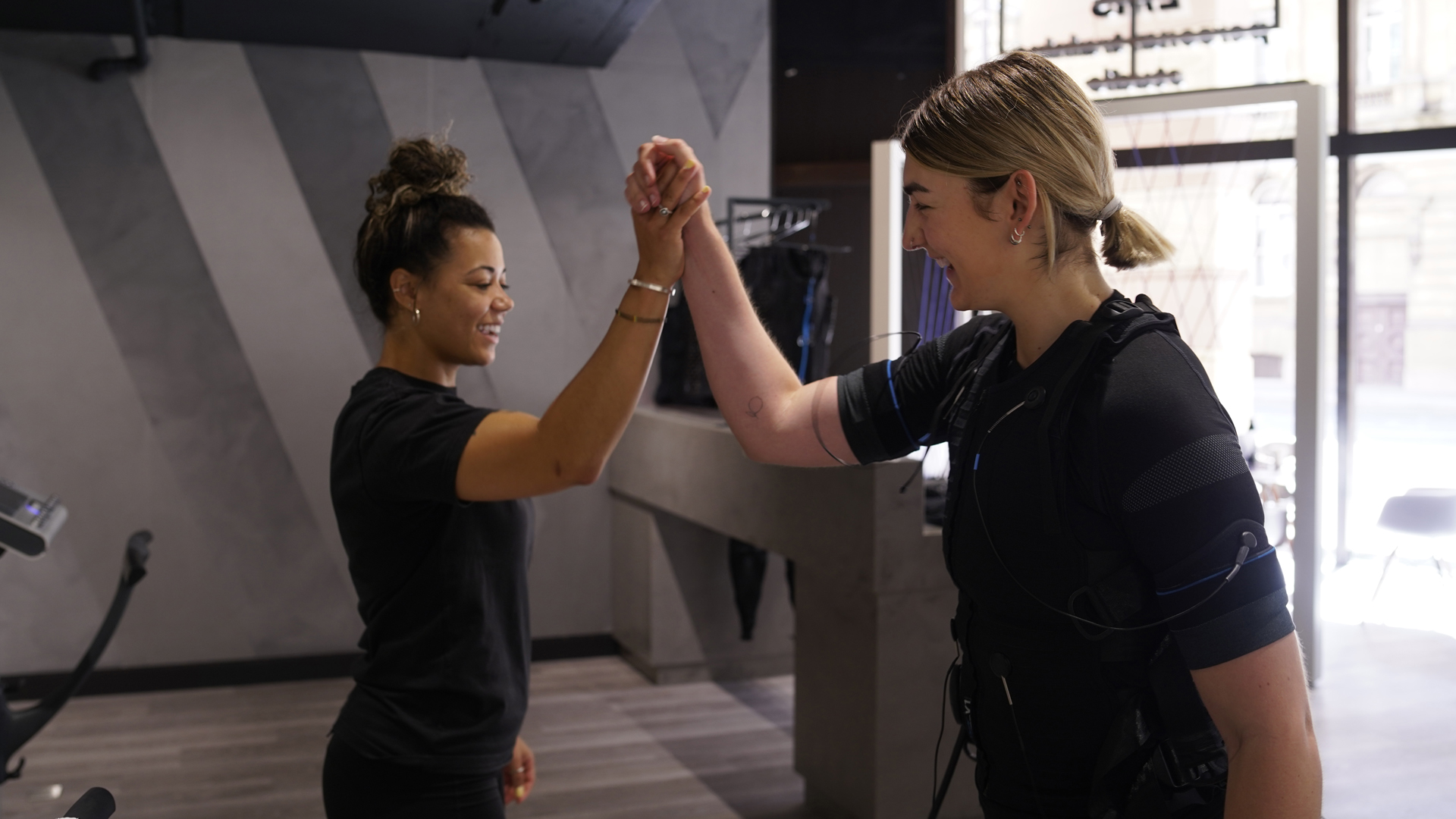Can Chrissy Teigen's 20-minute workout replace fours hours of weight lifting? I tried it to find out
Popular with A-listers and world renowned athletes, EMS training promises a full-body workout in just 20 minutes. I put it to the test


Between work, family and friends, it can often be challenging to fit in the time to train. So imagine if it was possible to reap the benefits of an intense, full-body workout without having to spend hours in the gym. Too good to be true, right?
Enter EMS training – the workout that promises results equal to four hours of training in just 20 minutes. According to Holly Isaacs, General Manager at Surge Fitness, the average customer is in and out of the studio in just 30 minutes. It’s no wonder the likes of Chrissy Teigen, Liz Hurley and Rita Ora are all fans.
So how does it work? EMS stands for Electro-Muscular Stimulation. Whereas conventional training using a pair of the best adjustable dumbbells stimulates around 60% of muscle fibers, EMS training can stimulate up to 98%. As you exercise, electrical impulses bring eight major muscle groups into controlled contractions. The pulses act as resistance, so the movements feel harder and leave you fatigued quicker.
Because of the intensity, trainers recommend no more than two EMS sessions per week – and if you do fancy squeezing in a second session, you should leave 92 hours between each one to give your body time to recover.
Now I’m someone who’s much more at home pounding pavements than throwing weights around a gym. But at the same time, I know that cross training for runners is vital to prevent injury. So I headed to Surge Fitness to try out an EMS training session for myself, and see if I could really reap the benefits of strength training in just 20 minutes. Here’s what I discovered.
1. It's not actually painful
Before we began the workout, I was helped into a Lara Croft-style EMS electrode vest, along with additional electrodes targeting my arms, legs and glutes. I was then attached to the machine, before my trainer began adjusting the current level for each muscle group.
I was nervous that the electric impulses would feel like shocks, but it was more like a strong vibration going through you. Sure, it feels a little foreign and intense to begin with, but you get used to it. The trick is to remember that you are in control of the machine – not the other way round – and therefore you need to remember to squeeze your muscles in order to control the vibrations.
Start your week with achievable workout ideas, health tips and wellbeing advice in your inbox.

2. But it’s a lot tougher than it looks

The electrical impulses aren’t continuous. In front of you is a display screen that will light up green for four seconds, during which time your muscles will contract and you’ll perform a movement. Yellow signals ‘get ready’, and on red you get a chance to breathe. You do need to find a rhythm and pay attention to the color cues, however, because the impulses feel a lot more tingly if you’re not paying attention and can knock you off balance.
We worked through a series of seemingly simple movements, including squats, reverse lunges, bicep curls and rows. All of them were slow and controlled. Despite the fact that you’re not squatting a barbell or lifting any dumbbells, each four second ‘green light’ feels super challenging on the muscles. I could definitely notice that my core muscles were more engaged on the ab crunches compared with standard sit-ups too.
Half way through the workout, I was already starting to get a sweat on – something I don’t tend to experience from my usual strength training sessions.
3. It’s easy on the joints
One of the benefits of EMS training is that it provides a full-body strength workout without using any weights, so you’re not actually putting any additional stress on the joints, ligaments or tendons. For those recovering from injury, this could help you to get back to doing what you love sooner.
EMS training also activates the deep seated spinal muscles, so could be ideal for those who are struggling with back pain. In one 2018 study, 30 patients aged 40-70 years old were assigned to an EMS-training or control group for four weeks. Those in the EMS group reported a reduction in pain intensity, and an increase in maximum trunk strength.
4. It's good for the pelvic floor
If you forget to do your pelvic floor exercises, the good news is EMS-training indirectly targets the pelvic floor muscles. This is because the impulses stimulate specific muscles in your legs, glutes and stomach, causing them to contract. The pelvic floor muscles are connected to these muscles, so they also contract.
While research in this area is limited, one study published in Clinics (Sao Paulo) found that women with urinary incontinence saw a significant improvement in their quality of life when they used pelvic floor exercises, electrical stimulation (EMS training) and vaginal cones compared to a control group. As a result, the authors concluded that EMS could be an effective treatment option.
5. You really do feel the burn
I was definitely sceptical as to whether my muscles would feel any benefit after a 20-minute workout – especially results comparable to four hours of training. But even a couple of hours after training I started to notice the fatigue in my muscles, and within 48 hours the DOMS had well and truly set in.
Obviously, I can’t speak for whether I noticed any long term improvements in strength or a reduction in pain, but I can certainly get on board with the efficacy of EMS-training. Not to mention, a lot of EMS studios provide everything down to your base layers, removing the need to carry a gym bag.
This being said, the one-to-one nature of the training can come at a price, so I’m not sure how accessible it would be for everyone. For a more budget friendly option, you could try this 15 minute, 15 moves dumbbell workout or our 10 minute, 10 moves abs workout. However, if you’re considering investing in personal training but you’re restricted by time, EMS training could be the solution you’ve been looking for.

Alice Ball is the Health Editor for Future Plc. With more than five years of experience working in health journalism, she's covered everything from why we should 'kill' the calorie, to destigmatizing the menopause. Alice also specializes in nutrition and supplements. She's a self-confessed running fanatic, currently in training for her fifth marathon. She enjoys documenting her progress on her Instagram account, @aligoesrunning. Alice works across a number of Future's sites, including LiveScience and Fit&Well.